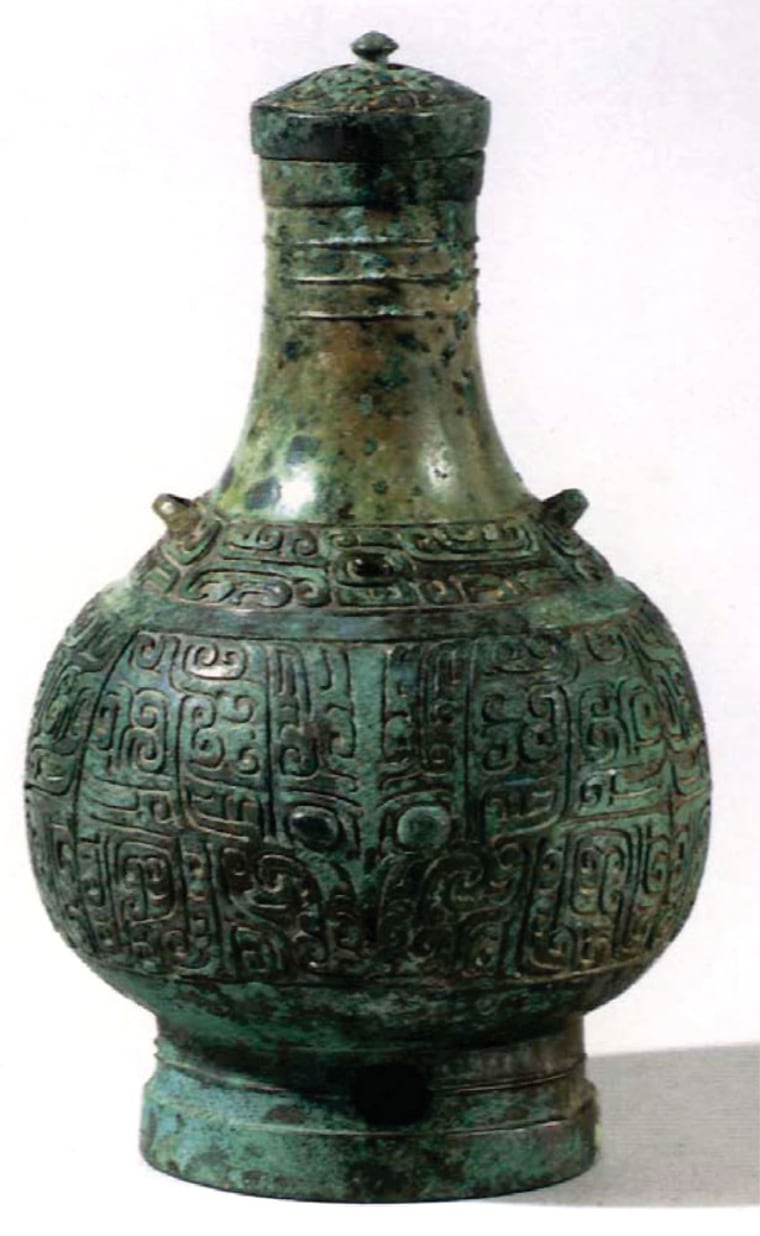The Chinese were consuming fermented beverages — possibly wine — as long as 9,000 years ago, according to scientists who used modern techniques to peer back through the mists of time.
Early evidence of beer and wine had been traced to the ancient Middle East. But the new discovery indicates that the Chinese may have been making their drinks even earlier.
“Fermented beverages are central to a lot of our religions, social relations, medicine, in many cultures around the world,” said Patrick E. McGovern of the University of Pennsylvania Museum of Archaeology and Anthropology.
These drinks “have played key roles in the development of human culture and technology, contributing to the advance and intensification of agriculture, horticulture and food-processing technologies,” he reported.
The discovery, by a team of researchers led by McGovern, is being published online in this week’s early edition of Proceedings of the National Academy of Science.
Artifacts from stone-age village
McGovern’s team collected pieces of 16 pottery vessels at Jiahu, an early New Stone Age village in China’s Henan province. This is the same site where archaeologists have found the earliest evidence of musical instruments, including an ancient flute.
The ceramics were dated to about 7,000 B.C. — 9,000 years ago — and the scientists analyzed residue that had collected inside the pots.
The results showed chemicals that matched residues from modern rice and rice wine, grape wine, grape tannins and ancient and modern herbs. There were also indications of hawthorn fruit.
“The most straightforward interpretation of these data is that the Jiahu vessels contained a consistently processed beverage made from rice, honey and a fruit,” the team concluded.
The team also reported on an analysis of 3,000-year-old liquid found in sealed bronze vessels from the Chinese city of Anyang.
These vessels contained rice and millet wines, they found, flavored with herbs and flowers.
“It’s similar to the rice wine that’s produced in the area southwest of Shanghai” today, McGovern said in a telephone interview from Philadelphia. “I have never tasted the ancient samples, I’ve only smelled it, but does remind you of these Shaoxing rice wines with the floral aromatic scents,” he said.
Ancient drinks around the world
In 1990, McGovern was part of a team that found what was then the earliest known chemical evidence of wine, dating to about 3500 B.C., from Godin Tepe in the Zagros Mountains of western Iran. That was followed two years later with the earliest chemically confirmed barley beer, in another vessel from the same room at Godin.
In 1994, chemical testing confirmed resinated wine inside two jars excavated by a University of Pennsylvania archaeological team at the Neolithic site of Hajji Firuz Tepe, Iran, dating to about 5400 B.C.
Sarah Milledge Nelson, a professor in the anthropology department at the University of Denver, said that although no one has discovered such early evidence of fermented beverages in China before, “it’s logical.”
“People around the world found out how to make themselves drunk quite early,” said Nelson, who was not part of the research team.
While it is possible that the newly found pottery contained grape wine, she suggested that rice wine is more likely, possibly flavored with grapes or hawthorn fruit.
How did wine get started?
Julie Hansen, chair of the archaeology department at Boston University, said the report is “exciting news for (fermented beverages) coming out of China. It’s the first evidence we have, that I’m aware of, from that region.”
“I think it’s probable that people would collect fruits and use the vessels as storage, maybe deliberately fermenting them, or accidentally doing so,” she said.
The research was funded by the National Natural Science Foundation of China, the Henry Luce Foundation and the U.S. National Science Foundation.
